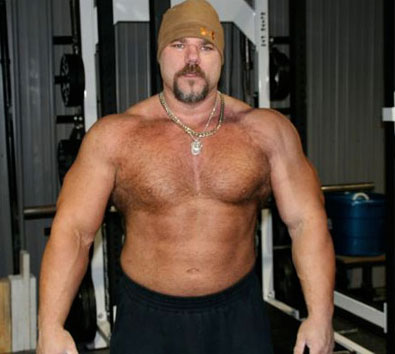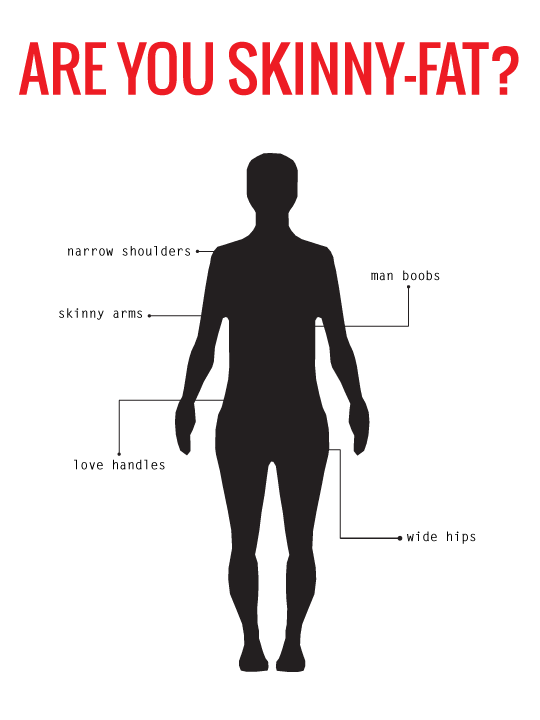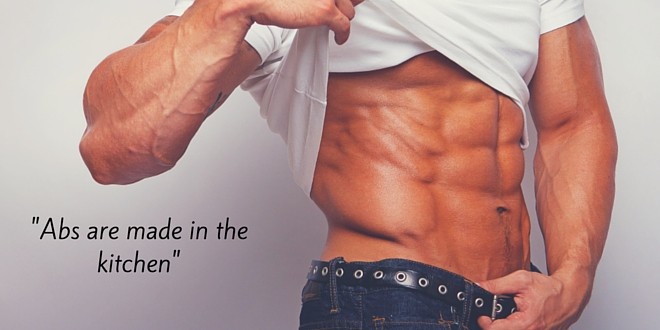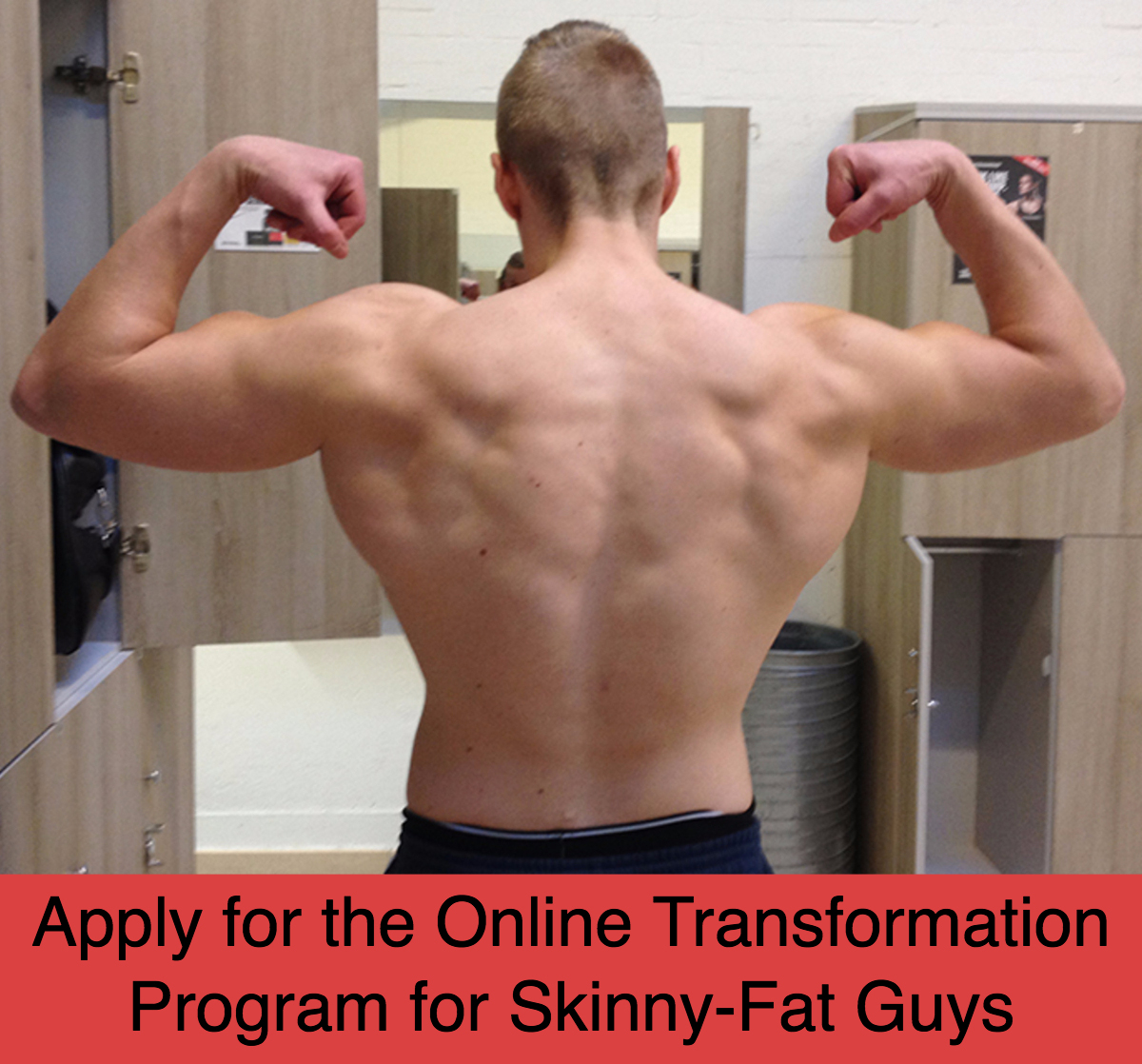Visible abs are mostly a result of having low body-fat levels rather than developed ab muscles.
This is why you can see untrained skinny guys who have visible abs and definition on their arms and shoulders.

They haven’t trained their muscles before however they have low body-fat levels.
The low body-fat levels enable them to reveal the small amount of muscle they have in that section.
In other words, having visible abs doesn’t require more abdominal muscle mass than the amount you’re naturally born with, but it does require low body-fat levels.
In addition, a common belief is that you can use sit ups, leg raises and other ab exercises to target fat loss in the abdominal area.
Unfortunately, there are no exercises that determine where your body loses fat first.
Your body loses fat in the places it wants to and all you can do is wait out the fat loss until the waist area is eventually fully leaned out.
As a general rule of thumb, you lose fat first in the places you gained it last.
For example, if you gained body-fat on your waist first then it will be the last place to go.
With that said, ab exercises are not completely useless.
You can use ab exercises to build thicker ab muscles.
Thicker ab muscles will make your abs more visible despite having higher body-fat levels.
Good examples are powerlifters and strongmen:

They have ab definition despite having relatively high body-fat levels.
However, the downside to building up thick abs is the expansion of your waist.
A thick waist gives you a bulky looking physique and decreases your V-taper.
If you’re a skinny-fat guy with a naturally wide hip and waist structure, adding more size in that area can make you look fat when wearing a shirt.

Not the look most of us go for.
So how about cardio training?
Cardio is a good addition to your strength training, however it should not be your main weapon for losing body-fat.
Losing body-fat through cardio is not optimal because the main factor that controls how much fat you lose is total Daily calories.
To be specific, you want to be in a Caloric deficit.
For example, if your Daily Caloric Expenditure is 2800 Calories and you consistently eat 2500 Calories per day (a daily deficit of 300 Calories) you will over time lose weight and some of that weight will be body-fat.
The mistake a lot of people make is to do excessive amounts of cardio to put themselves in a Caloric deficit.
It’s easier to cut down your Calories by controlling food choices compared to doing more exercise.
For example, a typical 30 min cardio session burns anywhere from 250-400 Calories.
To achieve this deficit of 250-400 Calories, you can remove 2-3 table spoons of cooking oil or a snickers bar per day from your diet.
Now think about what is easier: Removing a snickers bar or running for 30 minutes?
It’s far easier to remove the oil or snickers bar than it is to run for 30 min.
In addition, doing lots of Calorie burning exercises such as running increases your appetite so you end up eating more food afterwards.
In many cases, this completely negates the Calories you burned with the exercise.
As a result, a well structured diet is your main weapon when wanting to reveal your ab muscles.
Cardio should be a tool that you add to get into a Caloric deficit once you’ve already cleaned up your diet. (And if you’re smart about it, you will add just small amounts of cardio at first to maintain good health and then add more cardio as you get deeper into the diet).
This is why you often hear: Abs are made in the kitchen.
The bulk of the work is truly done in the kitchen.

Your diet is the best strategy to lose body-fat because it has the most impact on your energy balance (Calories in and Calories out) and makes it less painful to achieve a Caloric deficit.
When it comes to structuring your diet, it’s about getting the big picture right and not about focusing on certain super-foods.
To be specific, you want to structure your diet in such a way that:
- You eat foods that have a high satiety index 80-90% of the time. By eating foods that keep you satiated for a long time you will find it easy to eat less food on a daily basis and prevent overeating. Good examples of high satiety index foods: Meat, fish, seafood, potatoes, rice, beans, fruit, vegetables.
- Throughout the day, you occasionally feel tolerable levels of hunger: Tolerable hunger means you’re burning fat. It’s ok to have tolerable hunger for 1-2 hours before your next meal. Don’t snack to kill that hunger because snacking between meals kills the fat-burning process.
- You eat consistently to keep energy levels high and prevent overeating and impulsive food choices with your next meals. I recommend 3-5 meals per day depending on your preferences and schedule.
- Once per week you have a re-feed meal where you eat anything you want. This will keep your metabolism and natural testosterone production as high as they can be.
Be proud but stay hungry!
Oskar Faarkrog, ISSA Certified Trainer
 Read my free 50 page guide "The 2 Phases of a Skinny-Fat Transformation"
Read my free 50 page guide "The 2 Phases of a Skinny-Fat Transformation"